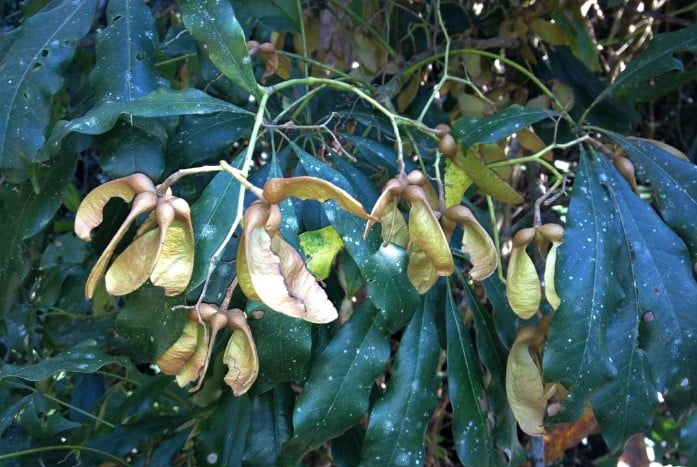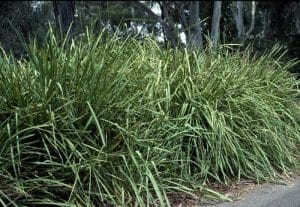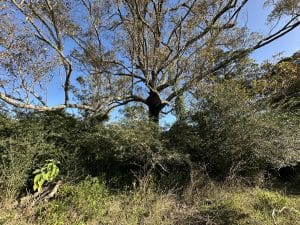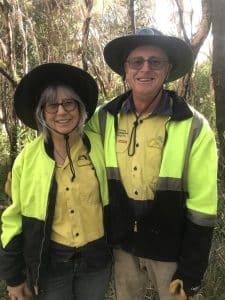
This beautiful rainforest species is one of my favourite trees. It is a very tall tree, reaching up to 50m high and with a diameter up to 170cm when mature, with a dense, dark crown. It prefers rocky gullies and creeklines on volcanic soils, and occurs from Bulahdelah (NSW) to Gympie (QLD). To the north, it occurs at elevations above 600m ASL.
There is a stunning stand adjacent to the Wootton Way, in an intermittent rocky creek bed, just north of the O’Sullivan’s Gap picnic area. These elegant giants are easily identifiable by their distinctive, large buttress roots, and dark grey to black, rough scaly bark, which is often fissured in older specimens. The buttress roots of this (and other buttressing trees, such Ficus rubiginosa) were used by Aboriginal people to send messages, often as warnings of danger. Sticks, boomerang or other implements were used to strike the buttress roots, generating a deep reverberating drum beat that would travel for many miles. Black Booyongs were known as the ‘Drum” or ‘War’ Tree in some tribes. Other sources indicate that the tree was revered by and sacred to Aboriginal people and it may have been used in ceremonies and rituals, the sound so powerful that it was believed to ward off evil spirits [“The Black Booyong Tree: A Cultural and Historical Perspective” by Peter Sutton and Diane Barwick (1995); “Black Booyong Drumming: A Living Tradition” by David Mowaljarlai and Jutta Malnic (1999)].
Being such a tall tree, it is often difficult to see the foliage in close range, but where there are big trees, there are usually saplings in the understorey, and the foliage is distinctive. It has large, alternate, compound leaves with 3-9 leaflets (7-15cm long) that radiate from a long leaf stalk. The lemon scented flowers are white and bell-shaped and are produced in March-April, with a distinctive winged seed formed from June-October. (insert Photo of seeds)
Argyrodendron actinophyllum (synonym Heritiera actinophyllum) has strong pink or brownish timber with a pretty silky grain, making it perfect for cabinetry and furniture, particularly bent work. Whilst it rots quickly if in contact with the ground, it was presumably a prized log tree during the early timber-getting days due to its impressive straight trunks and ornamental grain, but perhaps not so sought after as the ‘Red Gold’ (Toona ciliata), and large specimens still exist in rainforest pockets around Bulahdelah. It is more common in the gullies of the N-NW of the MidCoast area (Lansdowne-Comboyne Plateau and surrounds) where Subtropical rainforest proliferated before the 2019 bushfires, and many were lost in that horrific summer. (insert photo – Killabakh Booyong – a lone post-fire survivor in a rainforest gully at Killabakh.
Black Booyong generally co-occurs with Baloghia innophylla (Scrub Bloodwood), in Sub-Tropical Rainforest containing high species diversity in the canopy (PCT3019 – Baloghia-Booyong SubTropical Rainforest; or PCT3100 Northern Hinterland Baloghia-Dendrocnide SubTropical Rainforest; Or PCT3029 Lower North Wet Gully Palm Rainforest) TreesNearMe has approximate mapping of our area, and these three communities are common in Wang Wauk State Forest, and the Wootton end of Myall Lakes National Park.





